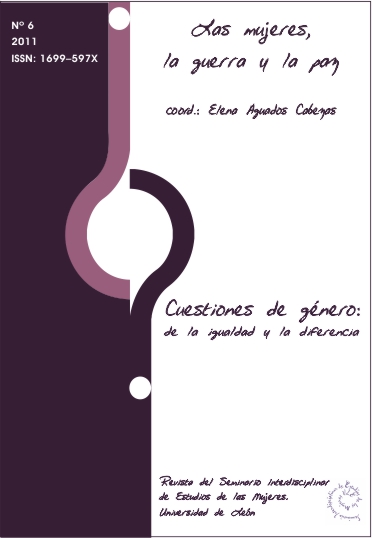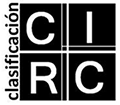Equal opportunities in the Armed Forces. The role of gender integration policies
DOI:
https://doi.org/10.18002/cg.v0i6.3765Keywords:
género, Forças Armadas, igualdade, políticas de integraçãoAbstract
In this article, the impact of the organizational policies on the construction of the equality of opportunity and integration of the gender in the Armed Forces is discussed. After a presentation of the empirical data that allow the global characterization of the determining factors and the situation of the military women in Western democracies, the paper of the organizational policies in the promotion of the equality of opportunity and gender integration in the Armed Forces is analyzed. The conclusion is that not always the policies destined to promote the formal equality will have identical effects in terms of social integration, and that the policies seem to be a necessary condition, but not enough to assure greater levels of equality between sexes in the military universe.
Downloads
Métricas alternativas
References
Carreiras, H. (2002): Mulheres em Armas. A Participação Militar Feminina na Europa do Sul. Lisboa: Cosmos/IDN.
Carreiras, H. (2006): Gender and the Military. Women in the Armed Forces of Western Democracies. London: Routledge.
Holm, J. (1993): Women in the Military: an Unfinished Revolution. Novato, Calif.: Presidio Press.
Iskra, D.; Trainor, S.; Leithauser, M. e Segal, M. W. (2002): “Women's Participation in Armed Forces Cross-Nationally: Expanding Segal's Model”. En Current Sociology vol. 50, nº, 5, pp.771-97.
Katzenstein, M. F. e Reppy, J. (eds.) (1999): Beyond Zero Tolerance, Discrimination in Military Culture. Lanham: Rowan & Littlefield Publishers.
Kümmel, G. (ed.) (2002): “Women in the Armed Forces of the World: Recent Trends and Explanations”, Current Sociology, vol. 50, nº. 5, pp. 611-797, (Número monográfico).
Mitchell, B. (1998): Women in the Military, Flirting With Disaster. Washington: Regnery Publishing.
Moskos, C. C.; Williams, J. A. e Segal, D. R. (orgs.) (2000): The PostModern Military. New York: Oxford University Press.
Nielsen, V. (2001): “Women in uniform”. En NATO Review, vol. 49, nº. 2, pp. 26-27.
Reynaud, E. (1988): Les Femmes, la Violence et l'Armée. Paris: Fondation pour les Études de Defense Nationale.
Rosen, L. N. et al. (1996): “Cohesion and Readiness in Gender-Integrated Combat Service Support Units: the Impact of Acceptance of Women and Gender Ratio”. En Armed Forces and Society, vol. 22, nº. 4, pp. 537-553.
Segal, M. W. (1995): “Women‟s military roles cross-nationally – Past, Present and Future”. En Gender & Society, vol. 9, nº. 6, pp.757-775.
Segal, M. W. 1999. “Gender and the Military”. En J. S. Chafetz (ed.): Handbook of the Sociology of Gender, New York: Kluwer Academic/Plenum Publishers, pp. 563-582.
Segal, M. W. e Segal, D. R. (1983): “Social Change and the Participation of Women in the American Military”. En Research in Social Movements, Conflicts and Change, vol. 5. Greenwich: JAI Press, pp. 235-258.
Stanley, S. C. e Segal, M. W. (1988): “Military Women in NATO: an Update”. En Armed Forces and Society, vol. 14, nº. 4, pp. 559-585.
Van Creveld, M. (2001): Men, Women and War. Do Women Belong in the Front Line? London: Cassell&Co.
Winslow, D. e Dunn, J. (2002): “Women in the Canadian Forces: Between Legal and Social Integration”. En Current Sociology, vol. 50, nº. 5, pp. 641-67.
Yoder, J. D.; Adams, Jerome e Howard, Prince (1983): “The Price of a Token”. En Journal of Political and Military Sociology, vol. 11, nº. 2, pp. 325-37.
Downloads
Published
How to Cite
Issue
Section
License
Copyright (c) 2011 Helena Carreiras

This work is licensed under a Creative Commons Attribution-NonCommercial-ShareAlike 4.0 International License.
L@s autores/as que publican en esta revista están de acuerdo con los siguientes términos:
1. L@s autores/as ceden de forma no exclusiva los derechos de explotación (reproducción, distribución, comunicación pública, transformación) a la Universidad de León, por lo que pueden establecer, por separado, acuerdos adicionales para la distribución no exclusiva de la versión de la obra publicada en la revista (por ejemplo, alojarlo en un repositorio institucional o publicarlo en un libro), con un reconocimiento de su publicación inicial en esta revista.
2. Este trabajo se encuentra bajo la Creative Commons Attribution-NonCommercial-ShareAlike 4.0 International License. Puede consultarse desde aquí la versión informativa y el texto legal de la licencia.
3. Se permite y se anima a l@s autores/as a difundir electrónicamente las versiones pre-print (versión antes de ser evaluada) y/o post-print (versión evaluada y aceptada para su publicación) de sus obras antes de su publicación, ya que favorece su circulación y difusión más temprana y con ello un posible aumento en su citación y alcance entre la comunidad académica.
Cuestiones de Género utiliza exclusivamente la licencia Atribución-NoComercial-CompartirIgual 4.0 Internacional (CC BY- NC-SA 4.0).
Bajo los siguientes términos:
- Atribución: Usted debe dar crédito de manera adecuada , brindar un enlace a la licencia, e indicar si se han realizado cambios . Puede hacerlo en cualquier forma razonable, pero no de forma tal que sugiera que usted o su uso tienen el apoyo de la licenciante.
- No Comercial: Usted no puede hacer uso del material con propósitos comerciales .
- Compartir Igual: Si remezcla, transforma o crea a partir del material, debe distribuir su contribución bajo la la misma licencia del original. cualquier uso permitido por la licencia.
No hay restricciones adicionales — No puede aplicar términos legales ni medidas tecnológicas que restrinjan legalmente a otras a hacer
L@s autores/as pueden consultar los derechos de copyright y las condiciones de autoarchivo en el directorio Dulcinea.










